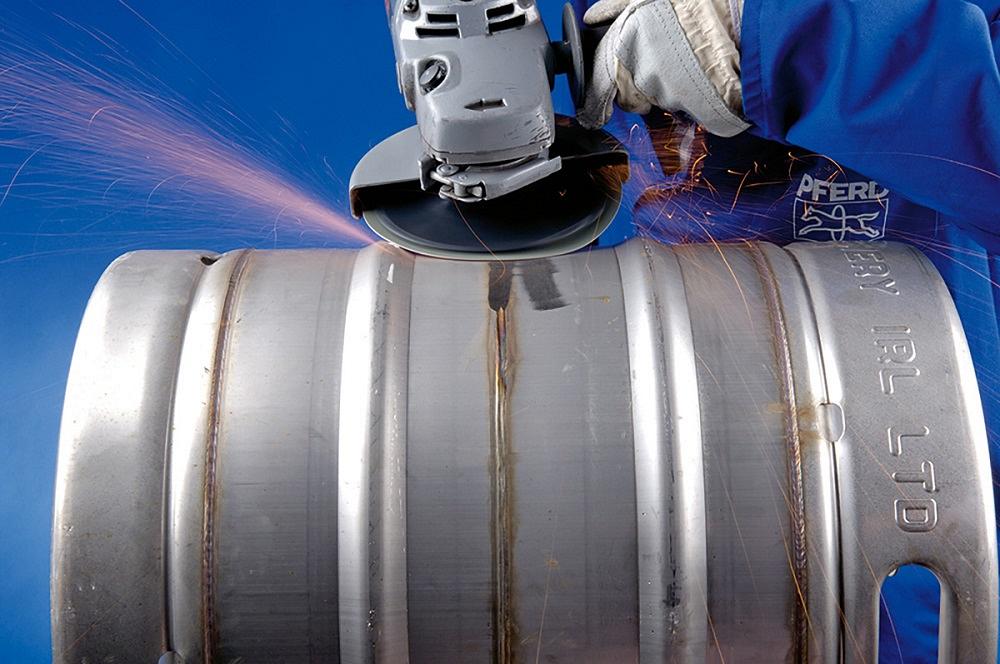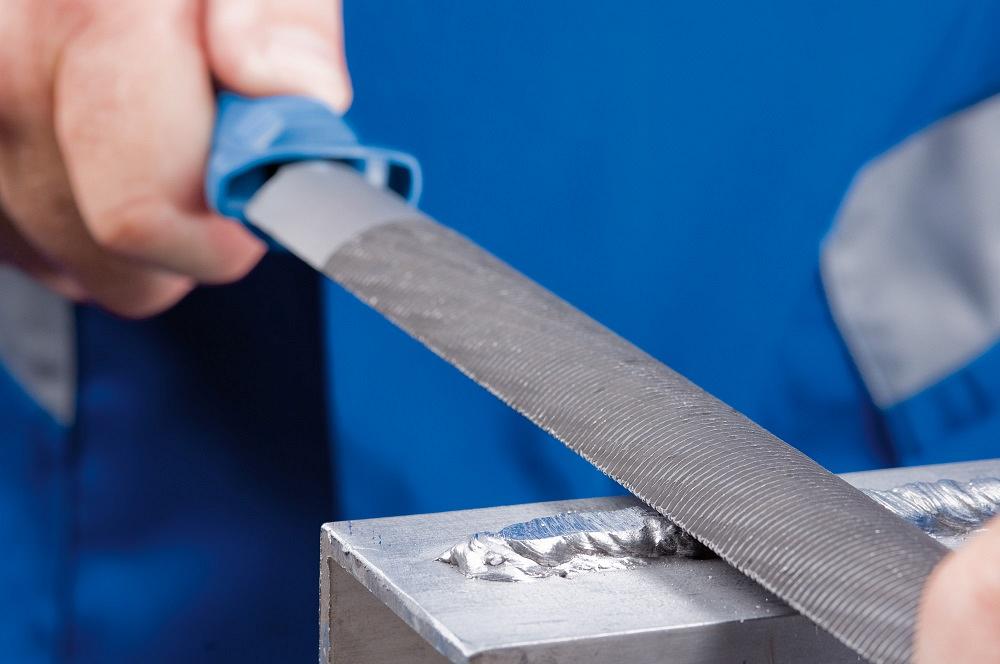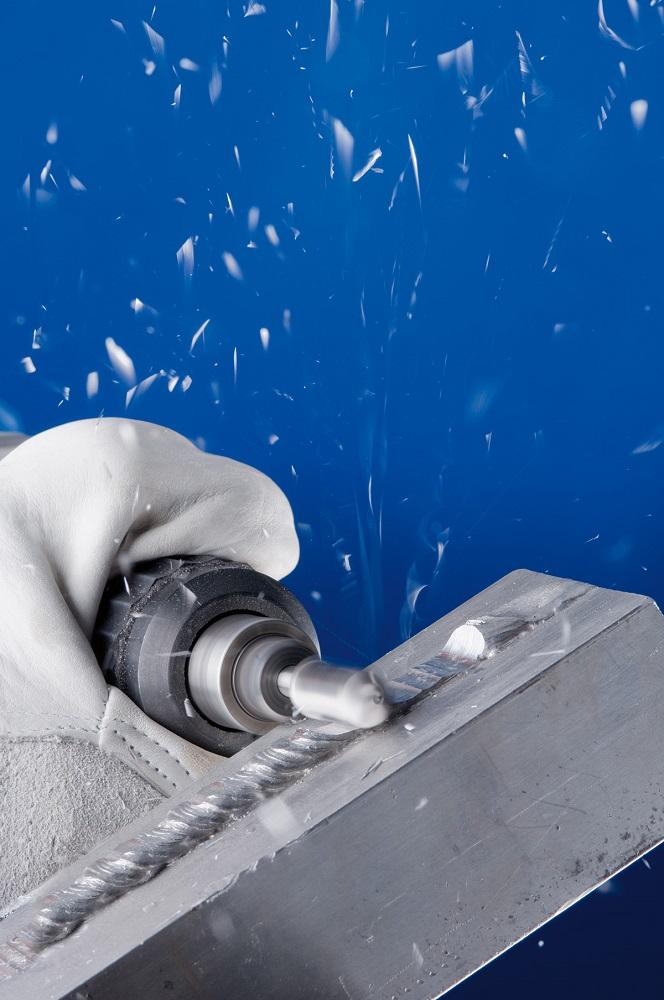Business Development Specialist
- FMA
- The Fabricator
- FABTECH
- Canadian Metalworking
Categories
- Additive Manufacturing
- Aluminum Welding
- Arc Welding
- Assembly and Joining
- Automation and Robotics
- Bending and Forming
- Consumables
- Cutting and Weld Prep
- Electric Vehicles
- En Español
- Finishing
- Hydroforming
- Laser Cutting
- Laser Welding
- Machining
- Manufacturing Software
- Materials Handling
- Metals/Materials
- Oxyfuel Cutting
- Plasma Cutting
- Power Tools
- Punching and Other Holemaking
- Roll Forming
- Safety
- Sawing
- Shearing
- Shop Management
- Testing and Measuring
- Tube and Pipe Fabrication
- Tube and Pipe Production
- Waterjet Cutting
Industry Directory
Webcasts
Podcasts
FAB 40
Advertise
Subscribe
Account Login
Search
An overview of aluminum finishing
Consider the best options at each stage of a fabrication process for this nonferrous metal
- By Jim Sucharski and Neil Otis
- September 12, 2023
- Article
- Finishing

When finishing any type of aluminum material, the metal fabricator’s goal is not to gum up the abrasive. Abrasive specifically designed to lower thermal loads helps to avoid that. Images: PFERD
Editor’s Note: This article originally appeared in the July 2023 issue of Canadian Fabricating & Welding.
Aluminum is a nonferrous metal, meaning it contains no iron. It falls into the same category as a brass or bronze. From a hardness standpoint, it is considered very soft. This means it has a tendency to load up whatever consumable you are using when preparing it for welding or painting.
Therefore, the goal is to find a product that will make it more difficult to achieve those loading properties. Whether it’s a cutoff wheel, a grinding wheel, a coated product, or even a file, the goal is to create conditions in which the aluminum doesn’t gum up the abrasive.
Aluminum comes in many different grades, from very soft and malleable aluminum to a 7075 series, which is quite hard. Still, the properties of the material demand attention due to its softness.
Aluminum is a great conductor of both heat and cold. It transfers both readily, which is why it is used in products such as pots and pans—a stainless steel pan with an aluminum core will allow heat to transfer much quicker and more evenly. It also makes such a product lighter. Aluminum is used in everything from utensils to shipbuilding, where weight is a concern.
From a safety standpoint, working with aluminum using abrasives creates aluminum dust, which can be very explosive. It’s important to have safety in mind, using a downdraft table when possible and wearing proper PPE.
When choosing what tools to work with on your aluminum parts, from preweld part cleaning to polishing, you must take into account these basic material properties and address them effectively.
Power Tool Questions
When evaluating a process, you need to be able to answer three main questions:
- What materials am I working on?
- What kind of tool am I using?
- What is my end goal (cleaning, blending, polishing)?
This second question is the heart of this discussion. Are you using an electric or pneumatic tool? If it is electric, is it variable-speed, straight-shaft, or right-angle?
Similar questions must be answered for a pneumatic tool. What RPMs are you employing? What kind of mounting systems are you using? Is it a threaded arbor? All of that will affect what products will suit a particular tool. Adjusting the air flow on a pneumatic tool only affects your torque, not your speed. If the tool is not rated properly, it can stall out when you apply pressure.
Most pneumatic tools are made to run between 90 and 95 PSI, and they are a fixed speed, between 18,000 and 25,000 RPM. Make sure to understand your tooling so your supplier can guide you in the right direction.
Preparing for Sheet Handling
If you are shearing your material in preparation for use, you will need to remove any sharp burrs on the sheet to handle it without risking injury. Commonly, shops choose to use a 50-mm flap disc along the edge. However, this also can be done using a file, which doesn’t require power or pneumatics. This approach is inexpensive, and it does not create airborne particulates.
Cleaning the Aluminum Sheet
When most people think of oxidization, they think of rust on carbon steel. However, every material rusts in its own way. Aluminum has a tendency to turn a gray-white color. Preparing your material requires removing that oxidized layer to reach the base.
Brushes are the ideal tool for this. It’s important that it be a stainless steel product. If you use a carbon steel brush on aluminum, it can become embedded in the material and affect the finish and any welds on that surface.
Brass brushes can be used, but make sure it is made with brass wire and not brass-coated wire. Brass-coated wire is less expensive, but it will contaminate the base material once the coating wears off.
If you are looking for a brush, you have two different types of wire brushes to choose from: crimped wire brushes and knot-style brushes. In cleaning and prep work on sheet, round, or square stock, a crimped wire brush in either a cup or bevel form is ideal. The wires on the brush pick at the contamination, lift it, and release it. On the other hand, a knot brush picks up and holds the contaminants, which you do not want.
A bevel-style brush can be particularly useful if you are working on a larger surface. For very large surfaces, say 1.75-in.-thick plate used to build aircraft carriers, a much larger cup-style brush is an ideal option. The key is that you want to keep the surface dimensionally similar to where you started.
Preparation for Aluminum Welding
If you are preparing to do a butt weld, it is necessary to perform a bevel. Traditionally, the first option is to use a stock grinding wheel to grind those bevels in. The thickness of the plate dictates what kind of angle is necessary and how deep that angle needs to be. Given that this is an approach that depends on the force applied by the operator, angles will differ a little bit.
Another option is to use a flap disc. This requires the use of a coated abrasive rated for aluminum. Ceramic oxide discs are popular for this because they have many more fracture points built into the design, so that it breaks down slower than a standard aluminum oxide disc. With any disc you use, however, it’s important that it have a lubricant or top side coating to cut down the friction and, in the process, the heat generated.
Heat is always the enemy; it not only affects the base metal, but it also affects the consumables. With the proper coating, the abrasive disc runs cooler, preventing the material from sticking as quickly to the abrasive material.

Sometimes the right tool for a job can be as simple as a file, which doesn’t require power or pneumatics. An added positive to this approach for aluminum is that it will not create airborne particulates.
A bevel burr is a third option. These come in 30- and 45-degree angles and create a more consistently shaped bevel, depending on how the bevel is designed. Some models now are designed similarly to a router, in that they have a top shelf to help guide you along the edge of the material, which creates greater accuracy. Burrs designed for use on aluminum tend to have deeper flutes to allow the soft material to be pulled away from the surface and out of the tool more easily.
Another option is to use carbide inserts attached to a disc, which is then attached to a right-angle grinder. Using carbide inserts means that no dust is being created; you are removing chips and chunks instead, which, from a health and safety standpoint, is a positive. There also is no smell associated with using it.
Achieving the Finish
The final question of the three proposed earlier comes into play when the finishing process begins. What is your pain point? What sort of finish are you trying to achieve? The answers to those questions determine what abrasives to use.
A linear finishing tool provides a nice vertical or horizontal scratch pattern, if that is the finish you are looking for. A nonwoven material, usually around 180 grit, provides a nice nondirectional finish, if that is your goal. A turned finish is achievable with a special tool, and a mirror finish is possible using a nonwoven pad with a scratch rate of 1,800 grit or equivalent. A brighter finish can be achieved by switching to a felt pad and using a polishing paste.
The key to working with aluminum is ensuring that all the consumables you use are rated for the base material you are preparing. Making sure that you keep the material contaminant-free, disperse heat, and reduce consumable loading are all important.
About the Authors
Related Companies
subscribe now

The Fabricator is North America's leading magazine for the metal forming and fabricating industry. The magazine delivers the news, technical articles, and case histories that enable fabricators to do their jobs more efficiently. The Fabricator has served the industry since 1970.
start your free subscription- Stay connected from anywhere

Easily access valuable industry resources now with full access to the digital edition of The Fabricator.

Easily access valuable industry resources now with full access to the digital edition of The Welder.

Easily access valuable industry resources now with full access to the digital edition of The Tube and Pipe Journal.
- Podcasting
- Podcast:
- The Fabricator Podcast
- Published:
- 04/16/2024
- Running Time:
- 63:29
In this episode of The Fabricator Podcast, Caleb Chamberlain, co-founder and CEO of OSH Cut, discusses his company’s...
- Trending Articles
Tips for creating sheet metal tubes with perforations

Are two heads better than one in fiber laser cutting?

Supporting the metal fabricating industry through FMA

JM Steel triples capacity for solar energy projects at Pennsylvania facility

Omco Solar opens second Alabama manufacturing facility

- Industry Events
16th Annual Safety Conference
- April 30 - May 1, 2024
- Elgin,
Pipe and Tube Conference
- May 21 - 22, 2024
- Omaha, NE
World-Class Roll Forming Workshop
- June 5 - 6, 2024
- Louisville, KY
Advanced Laser Application Workshop
- June 25 - 27, 2024
- Novi, MI



























